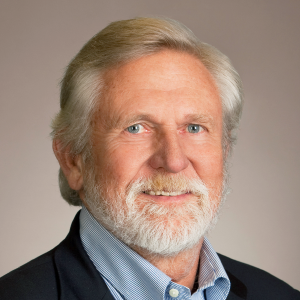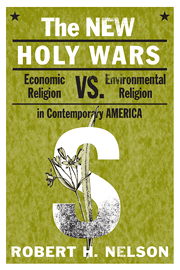Much has been said recently about the deep tensions within the Republican party. Far less has been said about a sharp division arising inside the Democratic party.
That latter tension was front and center recently when former Pennsylvania governor Ed Rendell wrote an op-ed piece for the New York Daily News drawing on his experience overseeing extensive natural gas development in Pennsylvania. “If we choose to embrace natural gas, it will help us get past a number of significant economic and environmental challenges,” Rendell wrote. “On the other hand, if we let fear carry the day, we will squander another key moment to move forward together.”
Rendell soon came under strong environmentalist attack, among other things for failing to disclose that he was a consultant to a private-equity firm with stakes in a number of energy companies, some with natural gas interests.
The Obama administration is feeling the heat as well. Ignoring objections from many environmentalists, the White House in March nominated Ernest Moniz, the Cecil and Ida Green professor of physics and engineering systems at MIT, to be secretary of energy. As director of the MIT Energy Initiative, Moniz assembled an all-star cast of MIT physical and social scientists to produce a June 2011 report on “The Future of Natural Gas.” That report concluded that “for more stringent [long-run] CO2 emissions reductions, further de-carbonization of the energy sector will be required; but natural gas provides a cost-effective bridge to such a low-carbon future [italics in the original]” over the next few decades.
When Moniz’s nomination was announced he was promptly attacked by environmental groups, which raised suspicions about his relationship with ICF International, a consulting firm that has done work for the oil and gas industry. Left unsaid was that ICF also has done work for the Environmental Protection Agency (EPA) and the Natural Resources Defense Council (NRDC)—and is in fact the go-to modeling firm for anyone wanting to do computer simulations of policy options involving the U.S. energy system.
In Colorado, Democratic governor John Hickenlooper has been a strong supporter of the “fracking” technologies now being used to extract oil and natural gas from shale. Hickenlooper has said that he sees increased gas production as advancing America’s economic and environmental objectives. On April 1, Hickenlooper was heckled at a speech at the University of Denver law school; as one protester was being removed from the hall, he shouted, “We’re surrounded by oil and gas and it’s killing us!”
Recognizing the significant environmental benefits of natural gas as a source of electric power, some prominent national environmental groups, such as the Environmental Defense Fund and NRDC, have mostly supported the increase in domestic gas production—and at least by implication the use of fracking to obtain the gas. For most in the environmental movement, however, opposition to fracking has become a virtually sacred cause.
Reflecting this, perhaps, the language of some of fracking’s opponents has become extreme. One environmentalist blogger, for example, wrote recently that “fracking is madness, a sign of a society gone completely insane and bent on self-destruction.” Another offered this: “The more we learn about a gas-drilling practice called hydraulic fracturing—or ‘fracking’—the more we see it as a zenith of violence and disconnect” in our world.
Although less hyperbolic, Sierra Club president Allison Chin, at a July 2012 “Stop the Frack Attack” rally in Washington, D.C., described the thinking behind her organization’s new “Beyond Gas” campaign, warning, “The out-of-control rush to drill has put oil and gas industry profits ahead of our health, our families, our property, our communities, and our futures. If drillers can’t extract natural gas without destroying landscapes and endangering the health of families, then we should not drill for natural gas.”
The movie Gasland put Hollywood’s propaganda skills to work in the anti-gas/anti-fracking crusade. And last December, the conscience of the baby-boom generation Yoko Ono and her son Sean Lennon placed a full-page ad in the New York Times, calling on New York governor Andrew Cuomo to “Imagine There’s No Fracking . . . and give clean energy a chance.”
Such opponents of fracking may not realize it, but there is a rapidly developing national consensus—at least outside their circles—that fracking and the abundant supplies of low-cost natural gas it can produce are a great economic and environmental windfall for the United States. As natural gas replaces coal over the next several decades in the generation of electricity, gas power plants will emit far fewer conventional pollutants than coal-fired plants and only about half the amount of carbon dioxide.
Many environmental activists refuse to accept this. As New York Times environmental reporter Justin Gillis wrote in March in the newspaper’s “Science Times” section, “many environmentalists believe that wind and solar power can be scaled to meet the rising demand [for electricity], especially if coupled with aggressive efforts to cut waste.” Most energy and environmental experts, however, believe otherwise. As Gillis noted, the experts favor a more realistic policy: “supplanting coal-burning power plants with natural gas plants” as a short- and medium-term bridge to carbon-free sources of energy that could be practicable by the second half of the current century.
At this stage, gas’s tremendous promise is undeniable. A February report from the Energy and National Security Program at the Center for Strategic and International Studies (CSIS) in Washington, “Realizing the Potential of U.S. Unconventional Natural Gas,” concluded that worldwide shale gas supplies are “enormous and readily available”; that “there are no ‘showstoppers’ (i.e., unmanageable risks that require widespread reconsideration of current recommended practices)”; that environmental and other “development risks are manageable today”; and that the federal government should “set an energy narrative for the country that articulates a clear role for natural gas.”
Combined with rapidly increasing production of oil from shale, using the same fracking techniques, what this means is that the United States and other normally pragmatic nations have a real prospect of significantly reducing their energy dependence on Russia, Venezuela, the Persian Gulf, and other politically unstable areas.
Still, the doubters persist. A 2011 study by Cornell University’s Robert Howarth, for example, raised the fear that gas production and distribution could result in the large-scale release of more greenhouse-intensive methane gas, negating the carbon dioxide advantages of gas over coal. Most experts are much less concerned. Because methane has a short half-life in the atmosphere (10 or so years, unlike long-lived carbon dioxide), most methane leaked from gas operations during a bridge period in the first half of the twenty-first century will have disappeared long before 2100. Hence, as Michael Levi, director of the Program on Energy Security and Climate Change at the Council on Foreign Relations, explained in a January 2013 article in the journal Climatic Change, “contrary to recent claims, methane leakage from natural gas operations is unlikely to strongly undermine the climate benefits of substituting gas for coal in the context of bridge fuel scenarios.” This has not prevented many environmental activists from continuing to bring up the methane red herring.
One of the stranger aspects of the fracking story is that not long ago—before opposition to fracking became a requirement of environmental faith—leading environmentalists, such as Carl Pope, executive director of the Sierra Club from 1992 to 2010, were touting the environmental advantages of natural gas.
Indeed, Pope agreed in 2007 to a marriage of convenience with the Chesapeake Energy Corporation, a leading U.S. producer of natural gas. From then until 2010, the Sierra Club received more than $26 million from Chesapeake Energy to promote the Club’s “Beyond Coal” campaign—and not coincidentally the use of natural gas as the leading replacement for coal.
Besides the greenhouse benefits of gas, another of Pope’s selling points was that living downwind from a coal-burning power plant can be a bit like smoking cigarettes. Some experts estimate that the small particulate matter and other conventional air emissions from coal-fired power plants cause some 10,000 to 30,000 Americans to “die prematurely” each year.
With the Sierra Club and other environmental organizations having demonized the oil and gas industry for such a long time, and with local opposition to gas development mounting among Sierra Club chapters in New York State and elsewhere, Pope apparently felt, however, that he could not disclose publicly the Chesapeake Energy funding. When Time magazine finally revealed it in 2012, Pope’s successor, Michael Brune, issued a letter of apology. Seeking to expiate the Club’s sins, Brune has become a strident anti-fracking activist, even as the Sierra Club illogically continues to promote sharp reductions in coal use—and now also reductions in gas use. As a result of these twists and turns, the current Sierra Club policy appears to be the following: The United States should radically curtail use of electricity until renewables are available on a large scale sometime in the future.
Despite their strong opposition, many environmentalists seemingly don’t understand the details of how gas is retrieved through the fracking process.
In February, for example, the highly regarded environmental think tank Resources for the Future (RFF) released details of a survey of 215 government, industry, university, and nongovernmental organization “experts” on the health and environmental risks posed by fracking. RFF concluded that “shale gas development is extremely controversial, in part because the potential health and environmental risks related to the drilling and production activities are not well understood.”
It’s really not that complicated. The extraction of gas from shale by fracking involves two stages. First, what is essentially a conventional vertical oil and gas well is drilled, typically to several thousand feet or more below the surface. It is only when drilling reaches this great depth that the more novel part of the process—applying techniques developed in Texas in the 1990s—comes into play: The well shaft previously drilled vertically is redirected to become horizontal, with the drilling continuing until the shaft extends horizontally anywhere from about a half-mile to a mile.
When the drilling is finished, water (combined with chemicals designed to reduce friction and serve other purposes) is injected from the surface into the well shaft at very high pressures, fracturing the shale rock formations far below and making it newly possible to economically extract the natural gas embedded in the shale.
Occurring far underground (often 5,000 feet below the surface, for example, in the Marcellus formation in Pennsylvania), the hydraulic fracturing of the shale (the “fracking”) cannot plausibly have any direct impact on the land surface above or on the water aquifers that are typically located much closer to the surface. Indeed, some geologists think it is physically impossible.
The release of methane into aquifers can and has occasionally happened. But it is nothing new: Cement casing failures and other well-bore problems have been occurring for as long as the oil and gas industry has been drilling vertical oil and gas wells in the United States.
A January 2013 Congressional Research Service report thus explained that “the challenges of sealing off the groundwater and isolating it from possible contamination are common to the development of any oil or gas well, and are not unique to hydraulic fracturing.” According to the logic of fracking critics, however, it would seem that we should be banning all oil and gas drilling everywhere in the United States.
There is, however, one new element to the fracking process that is not encountered in traditional oil and gas drilling. When the high water pressure is released after the fracturing of the shale, typically 10 to 30 percent of the water injected into the well (and occasionally much more) comes back to the surface. This “flowback water” contains both natural contaminants picked up underground during the fracturing process and the chemicals used by the driller to facilitate the fracturing. The water must therefore be disposed of safely or—as is increasingly the case—cleaned up and recycled to be used for the next gas well.
This has proved to be the most environmentally challenging part of the process. Abuses such as dumping flowback water into rivers and streams have occurred. Flowback water was sometimes sent to municipal treatment plants that didn’t have the full capacity to remove all the chemicals and other contaminants. As a result of increasing regulation, however, and a growing recognition within the gas industry that its future depends on public acceptance, the treatment of flowback water has improved greatly. Thus, as the 2011 MIT report on natural gas concluded, “the environmental impacts of shale development are challenging but manageable.”
The fracking hysteria sweeping through the environmental community, along with the conflicting signals coming from the White House, appears to have paralyzed EPA. On the one hand, compliance with EPA’s proposed regulations and other plans to control greenhouse gas emissions under the Clean Air Act will require a large-scale shift from coal powered electricity generation to natural gas. An obvious corollary is that fracking will have to occur on a growing scale to supply the necessary low-cost gas.
But EPA refuses to explicitly acknowledge this reality. For example, in 2009 the House of Representatives asked EPA to study the impact of fracking on drinking water. EPA agreed, but took two years to begin the research. Then last December EPA issued a progress report that managed not to answer any of the key questions, promising continued research.
Why would the environmental movement be attempting to persuade Americans to adopt such a nationally self-destructive strategy as spurning the shale gas windfall with which the United States has been blessed? And why is the movement also placing large new strains on its longstanding close ties with the Democratic party?
The answer is: The environmental movement’s opposition to fossil fuels of any kind has become an article of religious faith, not to be questioned. And fracking is not the only instance. Led by longtime environmental activist Bill McKibben, similar protests and extreme language have been directed against the proposed Keystone XL pipeline, putting the White House in a no-win position. As the Washington Post editorialized after the State Department released its most recent environmental-impact report on the proposed pipeline in March, Keystone “has become a counterproductive obsession for many in the environmental movement.”
McKibben has been a prominent figure in the environmental movement since the 1989 publication of his book The End of Nature. Matthew Nisbet of the Joan Shorenstein Center on the Press, Politics and Public Policy at Harvard’s Kennedy School of Government focused a March 2013 spotlight on him. McKibben wrote in 2006 that “the science” of climate change exhaustively detailed in The End of Nature “was only one part of the book, and not the most important.” Instead, as Nisbet relates,
the science was a [way of] warning that humans—through their pollution—had for the first time become “the most powerful force for change on the planet.” Crossing this new threshold “made this historical moment entirely different from any other, filled with implications for our philosophy, our theology, our sense of self.”
In short: Human beings were ever more sinfully playing God with the earth.
McKibben is following in a long American romantic tradition, dating to the New England transcendentalists such as Emerson and Thoreau, in which, as University of Wisconsin environmental historian William Cronon explains, wild areas are “frequently likened to Eden itself.” As Nisbet observed, “there is also a strong religious dimension to this tradition, as these settings are where ‘the supernatural lay just beneath the surface,’ enabling people to ‘glimpse the face of God.’ ”
In the view of McKibben and his devoted followers, greenhouse gases are the greatest threat ever to Nature—and to God’s Creation—because their “unnatural” warming will extend to even the remotest parts of the earth.
For environmentalists such as McKibben, science is not the point. Just as a precisely accurate explanation of climate change was never the central purpose of The End of Nature, so the actual fate of the Keystone pipeline or even of fracking is seemingly not the greatest concern.
Drawing on the writings of Stanford University historian Richard White, Nisbet writes that “McKibben’s main subject in most of his work has not been nature, but rather ‘the exploration of the meaning of being human.’ ” As White himself has written, nature for human beings is “an instrument for putting themselves—and a larger American self—in relation to the world.” Thus, White suggests, “McKibben’s deepest interests are less ecological than religious and philosophical.” Even when “he quotes scientists, he is most concerned with what nature signifies, which is something science can never tell him.”
One can admire McKibben for his heroic effort to save our souls—there is a lot that needs saving in the world. It would be better, however, if he returned to writing books and giving speeches as the main outlet for his religious passion. Using public debates over government policy decisions, such as whether or not to build the Keystone pipeline or to use fracking to develop the nation’s immense natural gas resources, could prove a very costly form of religious edification for the American public.
Some Democratic politicians—such as Governor Andrew Cuomo of New York, whose state government continues to ban all fracking despite studies by its own environmental experts concluding that fracking offers significant economic benefits and poses environmental risks that can be adequately managed—may be endangering any national political ambitions they have. Fracking poses a good test of character. Real leaders do not sacrifice great national economic and environmental benefits when confronted with irrational public fears—sometimes deliberately stirred up by Hollywood and other opportunists—and the parochial concerns of some local groups.
It could also be costly for the environmental movement itself, which risks alienating longtime supporters and discrediting itself further if it continues to take positions that may have strong religious appeal for true believers, but which fail altogether by a more pragmatic standard—a fact becoming increasingly evident to the rest of the nation.












